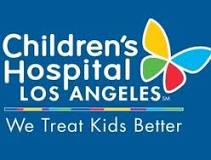A Study of INFUSE Bone Graft (BMP-2) in the Treatment of Tibial Pseudarthrosis in Neurofibromatosis Type 1 (NF1)
| Status: | Recruiting |
|---|---|
| Conditions: | Other Indications |
| Therapuetic Areas: | Other |
| Healthy: | No |
| Age Range: | 2 - 18 |
| Updated: | 8/2/2018 |
| Start Date: | March 2016 |
| End Date: | December 2021 |
| Contact: | Elizabeth Schorry, MD |
| Email: | elizabeth.schorry@cchmc.org |
| Phone: | 513-636-4760 |
A Study of INFUSE Bone Graft (Recombinant Human Bone Morphogenetic Protein-2/Absorbable Collagen Sponge) in the Treatment of Tibial Pseudarthrosis in Neurofibromatosis 1 (NF1)
The current study proposes adding BMP-2 (INFUSE), an anabolic agent, at the surgical site of
TPA repair in children with NF1, compared to a control group of patients treated surgically
without BMP-2. The following Specific Aims will be addressed: 1) to determine if use of an
osteogenic agent (BMP-2) at the time of surgical repair of TPA in NF1 patients will result in
improved bone healing; 2) to document safety of BMP-2 in a pediatric NF1 population; and 3)
to collect, process, and preserve biologic specimens at the time of surgery for future
studies.
TPA repair in children with NF1, compared to a control group of patients treated surgically
without BMP-2. The following Specific Aims will be addressed: 1) to determine if use of an
osteogenic agent (BMP-2) at the time of surgical repair of TPA in NF1 patients will result in
improved bone healing; 2) to document safety of BMP-2 in a pediatric NF1 population; and 3)
to collect, process, and preserve biologic specimens at the time of surgery for future
studies.
A randomized study will be performed by a multi-center group of the NF Consortium. A total of
54 patients will be randomized for treatment with or without INFUSE Bone Graft at the time of
surgical repair. For all patients, a standard surgical procedure will be used, including:
resection of pseudarthrosis tissue; placement of a rigid intramedullary rod; and placement of
autogenous bone graft from iliac crest. For patients in the BMP group, the INFUSE device
containing BMP-2 will in addition be applied intraoperatively to the osteotomy site. Fracture
union will be determined by scoring of radiographs (RUST score) for cortical bone fusion and
callus formation at the osteotomy site. RUST score at 12 months post-surgery will be the
primary outcome measure to determine efficacy. Secondary measures will include determination
of time to healing (months); quality of life measures; functional walking measures; and
incidence of refracture after surgery. This study, once successfully completed, will
determine if use of INFUSE Bone Graft improves healing of tibial pseudarthrosis in NF1 and
will document safety issues. Regardless of results, the better performing of the two groups
(control or BMP) will be able to serve as a much-needed control arm for future studies of
additional targeted therapeutic agents for NF1-related bone disease. An international working
group of orthopaedic surgeons and NF specialists has been formed and is committed to
successful completion of this trial.
54 patients will be randomized for treatment with or without INFUSE Bone Graft at the time of
surgical repair. For all patients, a standard surgical procedure will be used, including:
resection of pseudarthrosis tissue; placement of a rigid intramedullary rod; and placement of
autogenous bone graft from iliac crest. For patients in the BMP group, the INFUSE device
containing BMP-2 will in addition be applied intraoperatively to the osteotomy site. Fracture
union will be determined by scoring of radiographs (RUST score) for cortical bone fusion and
callus formation at the osteotomy site. RUST score at 12 months post-surgery will be the
primary outcome measure to determine efficacy. Secondary measures will include determination
of time to healing (months); quality of life measures; functional walking measures; and
incidence of refracture after surgery. This study, once successfully completed, will
determine if use of INFUSE Bone Graft improves healing of tibial pseudarthrosis in NF1 and
will document safety issues. Regardless of results, the better performing of the two groups
(control or BMP) will be able to serve as a much-needed control arm for future studies of
additional targeted therapeutic agents for NF1-related bone disease. An international working
group of orthopaedic surgeons and NF specialists has been formed and is committed to
successful completion of this trial.
Inclusion Criteria:
- Diagnosis of NF1 using the NIH Consensus Conference criteria. In addition to tibial
pseudarthrosis, one or more of the following diagnostic criteria for NF1 must be
present:
- Six or more cafe'-au-lait spots (≥ 0.5cm prepubertal; ≥ 1.5cm postpubertal)
- Freckling in the axilla or groin Optic pathway glioma
- Two or more iris Lisch nodules
- Two or more neurofibromas or one plexiform neurofibroma
- A first-degree relative with NF1
- Patients must have tibial pseudarthrosis that has the potential to cause significant
morbidity. Radiographic findings (AP & lateral leg radiographs) must support the
diagnosis of tibial pseudarthrosis with chronic non-union.
- Age between 2 years and 18 years of age at time of study entry.
- Performance Level: Karnofsky ≥ 50 percent for patients > 10 years of age and Lansky ≥
50 percent for patients or ≤ 10 years of age.
Prior Therapy:
- Patients who have undergone 1 previous surgery for tibial pseudarthrosis repair will
be eligible to enter the study if they have refracture.
- Use of BMP-2 in the prior surgery is permitted, however patients with prior exposure
must be screened for antibodies to BMP-2, bovine collagen, and rhBMP-2 neutralizing
antibodies.
- Prior use of BMP-2 is allowed but will be recorded as a possible compounding factor.
- Patients who have had 2 or more prior surgeries for pseudarthrosis repair are
ineligible
Absence of Tumors:
- Patients must undergo thorough physical examination of the leg undergoing surgery. If
physical exam is equivocal for presence of tumors, then a normal MRI of the lower
extremity will be required before eligibility is met.
- If there is evidence of plexiform neurofibroma or nodular neurofibroma of > 3 cm
diameter on the ipsilateral leg, then they are ineligible for the study.
- Organ Function Requirements
- Adequate bone marrow function defined as:
- Absolute neutrophil count (ANC) > 1500/
- µl Platelet count > 100,000/
- µl Hemoglobin ≥ 10.0 gm/dL
Adequate renal function defined as:
- maximum serum creatinine of 1.5 mg/dL OR
- a creatinine clearance≥70ml/min/1.73m2.
Adequate renal function defined as:
- maximum serum creatinine of 1.5 mg/dL OR
- a creatinine clearance ≥ 70ml/min/1.73m2.
Adequate liver function defined as:
- Total bilirubin < 1.5 X upper limit of normal for age, and SGPT (ALT) < 2 X upper
limit of normal for age
- Serum Vitamin D level ≥ 10 ng/ml
Exclusion Criteria:
- Lack of documentation for a diagnosis of NF1
- Tibial fracture without evidence of pseudarthrosis or tibial dysplasia
- Tibial dysplasia/bowing without fracture or pseudarthrosis
- Plexiform neurofibroma of any size, or nodular neurofibroma of > 3 cm diameter
involving the ipsilateral leg, including the hip
- If presence of plexiform is suspected but not certain on physical exam, MRI of the leg
may be indicated to rule this out.
- History of MPNST (malignant peripheral nerve sheath tumor) or any malignancy other
than asymptomatic and stable optic nerve glioma
- Optic nerve glioma that has resulted in precocious puberty or visual impairment of any
degree
- Visual impairment from any cause
- Precocious puberty from any cause
- Hypertension other than mild essential hypertension controlled with medication
- Metastatic disease of any kind
- Inadequate neurovascular status in the involved limb that may jeopardize healing
- Active or known prior infection at the pseudarthrosis site
- Active systemic infection
- Other injury or condition that prevents ambulation or completion of study assessments
- Two or more prior surgeries for tibial pseudarthrosis
- Bilateral tibial dysplasia
- Selection of a surgical approach that does not include prescribed surgical
intervention, which must include removal of pseudarthrosis tissue, placement of an
intramedullary rod using the Williams approach, and autogenous bone graft from the
iliac crest distributed at the osteotomy site
- Normal ipsilateral fibula without planned fibular osteotomy at time of surgery
- Allergy to bone morphogenetic protein
- Allergy to bovine collagen products
- Positive antibody titers to BMP-2, bovine collagen, or BMP-2 neutralizing antibodies
prior to surgery
- History of using any of the following medications, regardless of dose, for at least 1
month, within 3 months of enrollment: Anabolic agents, Glucocorticoids (does not
include inhaled glucocorticoids), Growth hormone, Parathyroid hormone (PTH)
- Need for postoperative medications that could interfere with bone healing of the
implant, such as steroids, (but not including low-dose aspirin or routine
perioperative anti-inflammatory drugs)
- Untreated endocrine abnormality, such as hypothyroidism, parathyroid hormone disorder
- Severe Vitamin D deficiency with serum 25-OH Vitamin D < 10 ng/ml (25 nmol/l) Patients
with Vitamin D levels < 10 ng/ml may be treated with Vitamin D and reconsidered for
enrollment when levels are sufficient
- Females who are sexually active without use of effective contraception
- Females who are pregnant or breastfeeding
We found this trial at
16
sites
Boston, Massachusetts 02115
Phone: 617-355-3193
Click here to add this to my saved trials
1720 2nd Ave S
Birmingham, Alabama 35233
Birmingham, Alabama 35233
(205) 934-4011

Principal Investigator: Bruce Korf, MD, PhD
Phone: 205-934-9411
University of Alabama at Birmingham The University of Alabama at Birmingham (UAB) traces its roots...
Click here to add this to my saved trials
5801 South Ellis Avenue
Chicago, Illinois 60637
Chicago, Illinois 60637
773.702.1234

Principal Investigator: James Tonsgard, MD
Phone: 773-702-6488
University of Chicago One of the world's premier academic and research institutions, the University of...
Click here to add this to my saved trials
3333 Burnet Avenue # Mlc3008
Cincinnati, Ohio 45229
Cincinnati, Ohio 45229
1-513-636-4200

Principal Investigator: Elizabeth Schorry, MD
Phone: 513-636-4760
Cincinnati Children's Hospital Medical Center Patients and families from across the region and around the...
Click here to add this to my saved trials
4650 Sunset Blvd
Los Angeles, California 90027
Los Angeles, California 90027
(323) 660-2450

Principal Investigator: Tena Rosser, MD
Phone: 323-361-5825
Childrens Hospital Los Angeles Children's Hospital Los Angeles is a 501(c)(3) nonprofit hospital for pediatric...
Click here to add this to my saved trials
South 34th Street
Philadelphia, Pennsylvania 19104
Philadelphia, Pennsylvania 19104
215-590-1000

Principal Investigator: Michael Fisher, MD
Phone: 215-590-5188
Children's Hospital of Philadelphia Since its start in 1855 as the nation's first hospital devoted...
Click here to add this to my saved trials
201 Presidents Circle
Salt Lake City, Utah 84108
Salt Lake City, Utah 84108
801) 581-7200

Phone: 801-581-8943
University of Utah Research is a major component in the life of the U benefiting...
Click here to add this to my saved trials
Johns Hopkins The Johns Hopkins University opened in 1876, with the inauguration of its first...
Click here to add this to my saved trials
Click here to add this to my saved trials
Click here to add this to my saved trials
Click here to add this to my saved trials
Click here to add this to my saved trials
Click here to add this to my saved trials
Click here to add this to my saved trials
111 Michigan Ave NW
Washington, District of Columbia
Washington, District of Columbia
(202) 476-5000

Principal Investigator: Roger Packer, MD
Phone: 202-884-2120
Childrens National Medical Center As the nation’s children’s hospital, the mission of Children’s National Medical...
Click here to add this to my saved trials
Click here to add this to my saved trials
